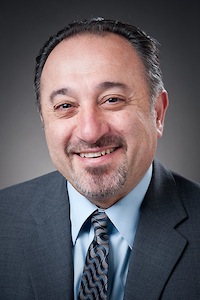Changing temperatures can be a challenge for building maintenance
While people have been enjoying unseasonably warm temperatures in the 70s and even 80s, the early warm spell makes it challenging to control the climate in the 120 buildings on the UW–Madison campus that operate using a central chill water system.
“It’s not like your house where you just turn a switch,” says Faramarz Vakili, director of campus sustainability operations and associate director of the Physical Plant Department at the University of Wisconsin–Madison.
The process of going from heating to cooling takes about three to four weeks and usually doesn’t begin until April.
To cool the buildings, chilled water is circulated through the cooling coils of several hundred air handling units located in the campus buildings that push cool conditioned air to the occupied space, Vakili says.
The majority of these cooling coils are drained as the cooling season ends and are refilled back with chilled water when the cooling season starts, a process that protects the coils from freezing during the winter.
Work has already begun to transition into cooling and Vakili hopes things will be more comfortable in two weeks or so.
“The dilemma we have in a situation like this when we’re a month premature is that the minute we go and prepare all these units for cooling, it’s very possible the temperatures are going to change and we could get a cold spell,” Vakili says.
With so many buildings to heat and cool, a protocol is used to determine which are priorities. First come the UW Hospitals and Clinics. Next are buildings or rooms that have animals and are 100 percent outside-air units or involve temperature sensitive experiments and essential server rooms. Third are buildings or rooms that have sealed windows, high-heat generating equipment or high occupancy fluctuations. Lastly are buildings or rooms that have operable windows in the majority of rooms for ventilation and have no experimental activities that would be affected by high temperatures.
If you have concerns about the temperature in your building, you may call the UW Physical Plant at (608) 263-3333 or email physical.plant.cars@fpm.wisc.edu with specific details. Or try to be patient until the cooling process takes effect.
“The bottom line is when people know how their building systems work, they can better manage their expectations,” Vakili says.

